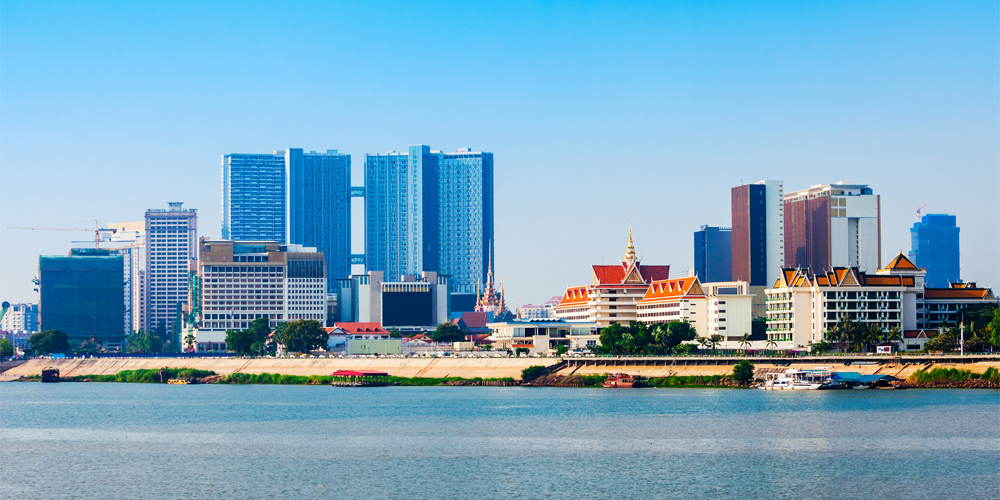Is there a secret to longevity? This health expert says 1,000% yes
In the era of social media, post-COVID, and with mental health at the forefront, a shift is taking […]

Cambodia is starting a huge infrastructure revamp, with a master plan containing 174 projects aimed at modernising the country’s transport and logistics networks within a decade.
The anticipated cost of the project is $36.6 billion. The plan calls for the building of motorways, high-speed rail lines, and other critical infrastructure to help Cambodia achieve its aspirations of becoming an upper-middle-income country by 2030 and a high-income nation by 2050.
The facts
Since taking office last year, Cambodian Prime Minister Hun Manet has actively sought international investment to assist these projects, following in the footsteps of his father, Hun Sen, who ran the country for nearly 40 years. Hun Manet stressed the importance of infrastructure in national growth during the groundbreaking of a bridge in Phnom Penh that was supported by a Chinese loan.
Current infrastructure and economic growth
Despite two decades of tremendous economic expansion, Cambodia’s infrastructure remains among the worst in Southeast Asia. The World Bank’s logistics performance indicator identifies this discrepancy. With predicted GDP growth in the coming years, it is critical to modernise the transport infrastructure to avoid it becoming a bottleneck for future economic success.
Major projects and investments
China has driven major projects such as Cambodia’s first motorway, and Japan is driving the expansion of the Sihanoukville port, which handles around 60% of the country’s import and export traffic. This port development costs $750 million and will greatly boost capacity, reflecting Japan’s targeted investment strategy.
Positive industry response
Despite the hurdles, the logistics and transportation industry remains optimistic about Cambodia’s infrastructure plans. The projected enhancements may attract additional investment and boost economic activity. According to industry experts, Cambodia’s attraction as a business and commerce location will increase with the implementation of robust infrastructure.
The arguments
The push for infrastructural development allows Cambodia to capitalise on geopolitical rivalries, particularly those between China and Japan. Both countries have a significant presence in Cambodia through their investments. China has played a prominent role in the Belt and Road Initiative (BRI), whereas Japan has focused on specialty projects such as wastewater treatment and road repairs. Strategic interaction with both countries has the potential to maximise Cambodia’s foreign investment rewards. Nonetheless, initiatives such as the $1.7 billion shipping canal connecting Phnom Penh to the Gulf of Thailand raise environmental and socioeconomic issues, emphasising the complicated trade-offs involved.
Financial challenges and environmental concerns
A large number of the megaprojects included in the master plan are funded via “build-operate-transfer” agreements, in which private companies finance and manage the projects before giving the government ownership. Given the size of the necessary investments, this idea is essential for Cambodia.
Strategic adaptability in collaborations
The government of Cambodia exhibits strategic adaptability by contacting diverse foreign partners for a range of initiatives. The government looks for a different partner if one rejects the proposal. This strategy reduces the dangers related to an excessive dependence on a single nation while also diversifying the sources of investment.
Aiming for a balanced development
The Cambodian government is keen to balance the impact of major foreign businesses by encouraging investments from a varied collection of countries. By preventing any one nation from having undue influence on Cambodia’s infrastructure development, this approach seeks to promote national competitiveness.
The ambitious plan for an infrastructural rebirth in Cambodia depends on fruitful international collaborations and calculated investments. The administration has big aspirations, but getting there will require managing geopolitical tensions, environmental concerns, and budgetary limitations. The entire world is watching to see if Cambodia can fulfil its vision for its infrastructure.

In the era of social media, post-COVID, and with mental health at the forefront, a shift is taking […]

With its fast speeds and revolutionary potential, 5G stands out as a noteworthy milestone in the field of […]